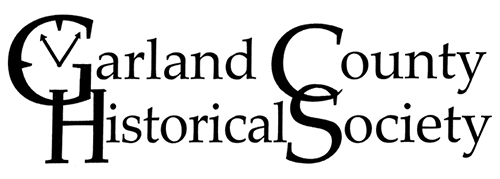Our History
The Garland County Historical Society, with the mission to collect, preserve and tell the story of Garland County’s history, was formed in 1960 led by our first officers—John Connelly, President; Mary D. Hudgins, Vice President; Capitola Glazner, Secretary; Dr. F. J. Scully, Treasurer; Sam Sargo, Nathan Schoenfeld, and Katherine Creason, Board of Governors.
Also in 1960, we began our monthly program meetings and published the first volume of our annual journal, The Record, which has won numerous awards under successive editors Inez Cline, Wendy Richter, Bobbie Jones McLane, Isabel Anthony, and Elizabeth Robbins. Through the years the society has published nineteen books, including our latest book, Then and Now: Hot Springs, Arkansas, a photographic exploration of our history by Mike Blythe.
The society found a permanent home for its collections in 1999 when it purchased a building at 328 Quapaw. From this building, today a staff of twenty-nine volunteers and one salaried employee serve the public five days a week. In 2009 we dedicated space in our archives to the veterans of Garland County, preserving their histories and displaying their memorabilia in a room that spotlights their contributions to our country.
On August 5, 2012, during a violent storm, a large tree smashed through a wall and through our roof. Although no historic items were damaged, this event made us realize how quickly our irreplaceable images and documents could be lost. We therefore began an intensive digitizing project. To date we have digitized and made accessible through our searchable software over 80,000 irreplaceable images (copies of which are stored off-site).
In 2014 we were honored to receive the Historic Preservation Recognition Award from the National Society of Daughters of the American Revolution.
Having run short of storage and work space, we raised funds in the community and constructed an addition to our archives building in 2018. We now have a large, climate-controlled archival storage area with movable shelving, more client space in an enlarged reception room, “clean” fire suppression to protect our collections, a handicap accessible entrance and handicap accessible restroom, and a larger vertical file room.
Today the society archives and conserves a very large photograph collection, masses of paper ephemera, newspapers, maps, books, and memorabilia. Besides helping local researchers and researchers from across the country, we also make local history available to the public through our website, Facebook page, monthly meetings, our frequent programs to civic groups and schools, and other activities.
No other organization attempts to preserve the history of the whole county in all its aspects, and no other organization provides services relating to local history on the scale that we do. Since a knowledge of its history strengthens a community in both tangible and intangible ways, we strive not only to preserve Garland County’s rich heritage, but also to make it accessible to everyone.
